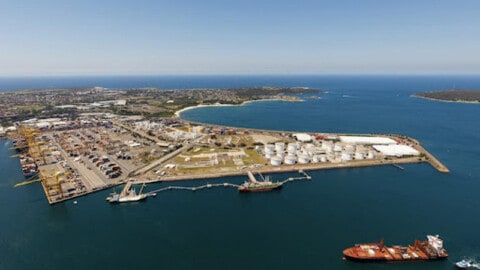By Michael Kilgariff, Principal, Kilgariff Advisory
The Australian infrastructure landscape is undergoing a profound transformation, marked by comprehensive policy reviews, and a noteworthy shift from transport infrastructure to renewables, electricity transmission, social infrastructure (such as water and hospital) and defence (in the north).
This era of change has left Catherine King, Minister for Infrastructure, Transport, Regional Development, and Local Government, contemplating two pivotal reports: the Infrastructure Investment Program (90 day) Review and the National Partnership Agreement (NPA) on Land Transport Infrastructure Projects.
The 90-day Review, executed by an experienced trio comprising Mike Mrdak AO, Clare Gardiner-Barnes, and Reece Waldock AM, sets the stage for intense consultations between the Federal and State/Territory Governments.
Those negotiations are focused on three central themes: productivity, liveability, and sustainability. The liveability dimension is a nod to Prime Minister Anthony Albanese’s urban vision, evaluating infrastructure based on its impact on the quality of life for people and communities.
The government’s response to this 90-day review is eagerly anticipated by industry, and it’s expected the response will coincide with the release of the Mid-Year Economic and Fiscal Outlook in early December.
The prevailing messaging from both is expected to emphasise fiscal and economic challenges, potentially necessitating a recalibration of the infrastructure agenda. Brace for funding cuts or delays for numerous infrastructure projects, considering an eye-popping $33 billion overrun in the infrastructure pipeline.
Spending, and contracts, on a downward spiral
In the meantime, while these reviews are underway, the infrastructure spending tap has been turned off, causing many engineering consulting firms to feel the sting. Anecdotal evidence is mounting of large-scale redundancies by major consulting firms, which, in turn, will have a ripple effect on contractors who may find themselves bidding for a smaller pool of contracts up to a year behind schedule.
While this is all underway, Jane Halton AO PSM, a former senior public servant, was entrusted with overseeing the Independent Review of the NPA on Land Transport Infrastructure Projects, a critical mechanism through which the Commonwealth invests in land transport infrastructure in tandem with states and territories.
As the NPA approaches its expiry date on 30 June 2024, the findings from this review will serve as the blueprint for negotiations surrounding a new Land Transport National Partnership Agreement.
This renegotiation will zero in on the project commitment and approval process, with a spotlight on administrative efficiency. The 80:20 federal/state funding model in regional Australia is almost certain to be abolished given it is viewed by some in the government as a mechanism to favour regional electorates.
Project package caps on the table
As part of the NPA Review, organisations like the Australian Owned Contractors Association and the Civil Contractors Federation are vigorously advocating for the government to meet its commitments in the Buy Australian Plan, to foster a more accessible and level playing field by implementing project package caps of $500 million.
The Buy Australian Plan aims to boost industry productivity and competitiveness by incentivising states and territories to embrace a set of rules, promoting opportunities for local mid-tier firms in bidding for significant infrastructure projects.
One key component involves the subdivision of contract sizes to ensure they do not exceed $500 million in value. There’s also a pressing need for both industry and government to confront the monumental task of decarbonising transport. In 2020 the transport sector contributed around 18 per cent of Australia’s emissions, predominantly related to road-based transport, and a staggering 70 per cent of Australia’s greenhouse gas emissions are tied to infrastructure.
The Commonwealth is resolute in its commitment to reducing greenhouse gas emissions, and while it’s almost a given that Australia will miss its target of a 43 per cent reduction below 2005 levels by 2030, it remains committed to the goal of net-zero emissions by 2050.
In response, the Commonwealth is crafting a Transport and Infrastructure Net Zero Roadmap and Action Plan to guide the reduction of transport emissions. Furthermore, the Commonwealth is on the cusp of releasing an Infrastructure Policy Statement, aimed at establishing a comprehensive framework for both the industry and the government to navigate this new infrastructure landscape.
A change in priorities
Simultaneously, the focal point of Australian infrastructure activity is shifting significantly from transport infrastructure to renewables, electricity transmission, social infrastructure and defence.
This transformation is expected to be most pronounced in regional Australia, giving rise to a commensurate demand for a skilled workforce. The latest Infrastructure Partnerships Australia Pipeline Report spanning from January 2022 to August 2023 highlights a substantial surge in energy-related expenditures, surging from $44.9 billion to $116.7 billion.
In contrast industry research and forecasting company, Macromonitor has predicted that while Australian major transport construction spending is at over $23 billion per annum, that will now start to tail off. From a national perspective, the zenith of transport construction has been reached, with attention now firmly shifting towards renewables, transmission, social infrastructure and defence.
The Commonwealth has unveiled its monumental $20 billion Rewiring the Nation program, aimed at access to clean energy while striving to meet stringent emissions reduction targets. A pivotal element of this initiative involves the construction of 10,000 km of new transmission lines, promising a substantial surge in infrastructure spending for regional Australia, driven by the renewable and transmission sectors.
While there are significant social license issues for transmission pending or currently in play, this sector will be a major contributor to regional employment and economic growth. The realm of infrastructure is perpetually dynamic and exciting. However, the upcoming years promise not only a transformation in funding decisions but also a significant shift in the very nature and objectives of infrastructure development.
Michael Kilgariff is a former CEO of Roads Australia and Managing Director of the Australian Logistics Council. In these and previous roles, he has developed a reputation for building strong working relationships across industry and government, with the aim of supporting and achieving outcomes that are mutually beneficial to industry, government and the community.


















